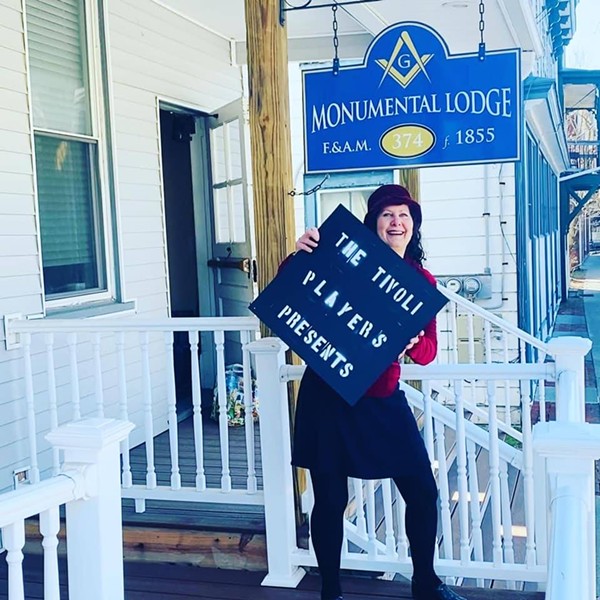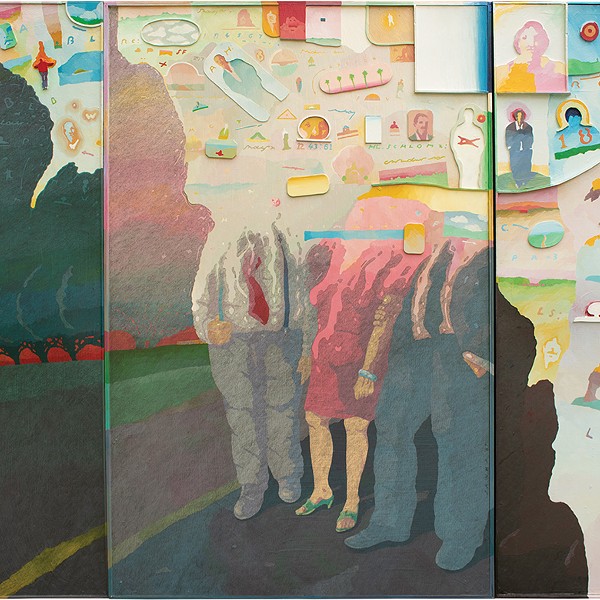
In Communist Poland, the only medium open to artists who shunned officialdom was the poster, and in the 1970s, one of its stars was Jan Sawka. Sawka, a longtime resident of High Falls who died this summer at age 65, had studied painting, printmaking, and architectural design. By age 27 he had earned international renown for his posters and avante-garde theater sets, work that got landed in trouble with government censors and led to his exile in France in 1976. Sawka, who was accompanied by his wife and infant daughter, became artist in residence at the Pompidou Center before moving to New York City the next year, where his first job was an illustration for the Op Ed page of the New York Times. Besides editorial illustration work, his multifaceted career included exhibitions of paintings and sculptures, architectural installations, proposals for public monuments, and even large-scale sets for touring rock bands, including a 10-story illuminated backdrop for the Grateful Dead's 25th anniversary concert tour.
Sawka rejected the rampant narcissism of the art world and used his talent as a force for good. For example, his 2010 model for a proposed peace monument in Jerusalem consists of a cluster of white, upright, spearlike rods crested with the symbols of Christianity, Judaism, and Islam—a case of swords turned into plowshares for sure. He was working on a 90-minute projection of 1,200 images that celebrated humanity in all its richness and diversity, accompanied by a soundtrack by Mickey Hart, at the time of his death. (Called The Voyage, the multimedia show is scheduled to tour theaters in 2014.)
Sawka was also working on a show of his sketchbooks at Bard College's Stevenson Library, "Personal Equilibrium: The Private Journals of Jan Sawka," which opened in November and is on display until December 15. His sketchbooks served as the laboratory for his paintings, sculptures, and architectural designs and accompanied him on his travels in Asia and Europe. Ideas seem to have sprung fully realized onto the page: his pen-and-ink faces, figures, trees, landscapes, and buildings are depicted in a fluid, expressive line or dense hatch marks, in many cases embellished with washes of pale or smoldering color.
A bold, 1960s exuberance combines with a classical sense of structure to create an art that bridges the personal and collective, East and West, the concrete and the sublime. The artist defeated the tyranny of the rectangular page by bleeding images off the edges or framing them in circles or other shapes that enliven the paper like giant punctuation marks. His means became the subject of his art: tones served as a metaphor for good and evil and even for existence itself: in a drawing titled Illumination, for example, a half-drawn figure passes from a darkened landscape into the empty page and vanishes. Omissions signify presence—in this case, the white paper reads as a brilliant, blinding light. Elements, such as the upper half of a face, are frequently obscured, charging his subjects with suspense, and the layering of images—there are drawings within drawings—suggests complex narratives in which memory, observation, commentary, and emotions coalesce.
Sawka loved typography, and some notebooks are filled with letters, elegantly conjured out of calligraphic swirls or imagined as massive, architectonic forms. Letters fill the sky of a peopled landscape like a portentous omen; blown up to a huge proportion, they become a surreal topography. Sawka's art abhors a vacuum. His drawings are like fragments of the mind itself, a cacophony of words and visions that is by turns exhilarated and frightened, analytical and moody, questioning but always transfixed by the world's beauty. Sawka the man may be gone, but his art is resolutely alive, the pages sonorous with his lovely, inventive images.
"Personal Equilibrium: The Private Journals of Jan Sawka" will be exhibited through December 15 at Bard College's Stevenson Library.
















